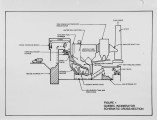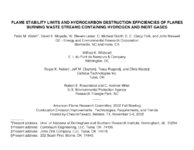Research and scholarly material on flame and combustion.
TO
Filters: Collection: "uu_afrc"
1 - 25 of 19
| Creator | Title | Date | Description | ||
|---|---|---|---|---|---|
| 1 |
 |
Page 25 | |||
| 2 |
 |
Page 13 | |||
| 3 |
 |
Page 10 | |||
| 4 |
 |
Page 7 | |||
| 5 |
 |
Page 19 | |||
| 6 |
 |
Page 24 | |||
| 7 |
 |
Page 6 | |||
| 8 |
 |
Page 1 | |||
| 9 |
 |
Page 18 | |||
| 10 |
 |
Seebold, James G.; Davis, Bruce; Gogolek, Peter E.G.; Kostiuk, Larry; Pohl, John; Schwartz, Robert; Soelberg, Nick; Strosher, Mel; Walsh, Pete | Reaction efficiency of industrial flares the perspective of the past | 2003 | Dahm, Werner J. A. (2007). Scaling relations for flare interactions, flame lengths, and crosslighting requirements in large flare. American Flame Research Committee (AFRC). |
| 11 |
 |
Page 20 | |||
| 12 |
 |
Page 28 | |||
| 13 |
 |
Walsh, Peter M.; Moyeda, David K.; Lanier, W. Steven; Booth, C. Michael; Folk, E. E. (Gary); Maxwell, ?John; Whitcraft, Wilfred K.; Noble, Roger K.; Clopton, Jeff M.; Rogers, Tracy; Nicely, Chris; Rosensteel, Robert E.; Miller, C. Andrew | Hydrogen flares: the DuPont-EER-EPA test program, amendment of the EPA requirements, and related developments | 2010-09-30 | |
| 14 |
 |
Page 15 | |||
| 15 |
 |
Page 15 | |||
| 16 |
 |
Page 3 | |||
| 17 |
 |
Page 14 | |||
| 18 |
 |
Walsh, Peter M.; Moyeda, David K.; Lanier, W. Steven; Booth, C. Michael; Folk, E. E. (Gary); Maxwell, John.; Whitcraft, Wilfred K.; Noble, Roger K.; Clopton, Jeff M.; Rogers, Tracy; Nicely, Chris; Rosensteel, Robert E.; Miller, C. Andrew | Flame stability limits and hydrocarbon destruction efficiencies of flares burning waste streams containing hydrogen and inert gases | 2002 | |
| 19 |
 |
Kretzschmar, Simon | Enviromix_split_phase_applying_flameless_combustion_principles_to_pyrolysis_furnaces | 2011 | As the drive towards reduced NOx emissions accelerates, the need to promote synergy between all furnace components becomes paramount. One of the most exciting methods of reducing these emissions is through the application of the principles of flameless combustion. Through high rates of flue gas reci... |
1 - 25 of 19
